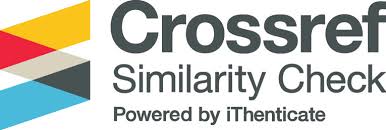Pengaruh Current Ratio, Cash Turnover Ratio, Debt To Equity Ratio Dan Time Interest Earned Ratio Terhadap Profitabilitas Pada Perusahan Manufaktur Yang Terdaftar Di Bursa Efek Indonesia Tahun 2019 – 2022
Abstract
Analysis of the profitability of manufacturing companies on the Indonesian Stock Exchange is important to understand the health of this sector and its impact on the national economy. The use of financial indicators such as Current Ratio, Debt to Equity Ratio, Cash Turnover Ratio, and Time Interest Earned Ratio provides an overview of the company's ability to earn profits. This study is relevant considering the external challenges faced by companies during 2019-2022 and there has been no research that specifically focuses on the relationship between Cash Turnover Ratio, Time Interest Earned Ratio, and profitability on the Indonesian Stock Exchange in that period. The factors that influence profitability are Current Ratio, Cash Turnover Ratio, Debt to Equity Ratio and Time Interest Earned Ratio. The population in this research is manufacturing companies listed on the Indonesia Stock Exchange (BEI) for the period 2019 - 2022, namely 95 companies. The sampling technique used in this research was non-probability sampling with purposive sampling technique. The results of this research show that the current ratio does not have a significant influence on profitability, while the cash turnover ratio, debt to equity ratio, and time interest earned ratio partially have a significant influence on profitability.







